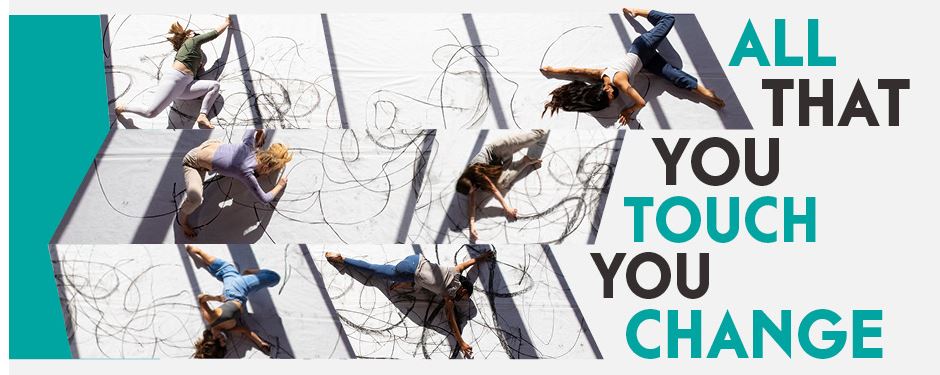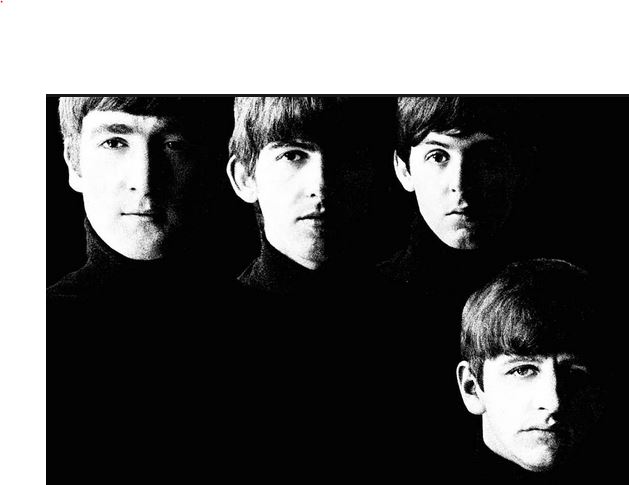Milwaukee has a robust and highly skilled dance scene in a large part because of the dance program at the University of Wisconsin – Milwaukee’s Peck School of the Arts. And for me, their Winterdances program is a much anticipated highlight in a dreary month of February.

This season’s presentation featured four new works by four choreographers who had something to say and a cast of dance students who were able to give voice and moment to the choreography. A side note, the first three pieces also credit the dancers with assistance in developing the works. And there wasn’t a ballet slipper in the house!
The opening dance was Weight of Inscriptions, choreographed by the department’s artistic director Maria Gillespie. The main stage theater at the UWM Fine Arts complex features a thrust stage and in this case it was configured as a large circle and the circle was completely covered with a sheet of white drawing paper. Now we are used to thinking of dancers as moving through space, controlling that space, interacting with one another, defining the space between themselves, and existing as a kinetic time based media. But in this work the focus shifts to the two dimensional as each dancer takes up charcoal and makes marks across the stage. But not just any marks…they are defined by two points of the dancers body…a pivot point such as a hip or stomach…and then the end of the hand holding the charcoal as the dancer reaches out and pivots around on the floor of the stage. It creates some rather mesmerizing arcs and circles and should remind us all of the designs we drew after being given our first compass. But the dance goes beyond even the overall drawing. The dancers area of action while drawing is limited by the lighting which expands or contracts as the dance evolves and the dancer(s) have to react within the lighted areas. This was all very effective and captivating to this member of the audience. Unfortunately, there wasn’t an opportunity to document the fluid lines on the floor at completion. But by dance end, the dancers had attracted their share of charcoal to their costumes. Performers: Sydney Bannach, Mckenzie Johnson, Grace Winkel, Rae Zimmerli. Guest Artist Performer: Cuauhtli Ramirez Castro.
And this was followed by it’s own little performance piece, albeit not a ‘dance’. Two stage hands came on to pick up and fold the circular drawing paper…to clear the deck…and prevent spilling excess charcoal on the stage. It was a slick bit of choreography in its own right and reminded me of the ground crews at the old Milwaukee County Stadium rolling up the tarp after a rain shower. Yesterday these two individuals earned their own round of applause.
Next is probably the most intriguing dance of the series, second wave of the plastic tide, choreographed by Simone Ferro. This dance has a powerful story to tell and goes all out to tell it in a very dramatic and energetic manner. The dance features six dancers in costumes that have fluttery pieces attached that reminded me of feathers. So of course the tale of Icarus comes to mind…but the energy and contrasts…would also suggest influences from African or Pre-Columbian dance or tales. The stage here included a central ramp inside the proscenium portion of the stage leading to a low platform that overlooked a mattress padded area. And in repetitions the dancers proceeded up the ramp to the platform and tried to leap off the other side while a companion held them back…until they lost their grip and the lead dancer fell to earth on the mattress. Each fallen angel then rolled aside to make way for the next Icarus and picked up a piece of detritus and found a place for it along the front of the stage. As they proceeded the front edge began to fill up with litter…and as the title suggests plastic litter and from my seat the items looked like one of the most prominent pieces of litter of our time, an Amazon Prime plastic envelope. The musical accompaniment here was live and courtesy of a number of percussion students from the UWM music department…and the intensity of the drums cleanly emphasized the intensity and dynamics of the dance. Performers: Deajah Barney, Kaylee Branshaw, Destiny Garland, Lily McClutchy, Maddie Westreich. Guest Artist Performer: Gina Laurenz.
After intermission, Equation of Motion brought the tempo down a bit and restored a sense of tranquility to the scene. Using recorded music that tended toward an ambient meadow or woodlot environ, Ashley Ray Garcia, Lauren Fleury, Maya Hirsig-Smith, Emma Meznarich, zaak Ordonez, and Cheyenne Willis brought a fluid sensibility to Anthony ‘YNOT’ Denaro’s choreography. This was a welcome break to just watch dance without feeling on edge…but don’t let me fool you…the music built up and the piece moved to a rewarding dramatic climax.
And the last piece, by choreographer Parijat Desai, is In Her Defense. Here again we are immersed in a story telling line directly involved with understanding and protecting nature. On a stage crowned with naked tree branches that are dramatically limned via colored lights, our dancers perform what might be construed as rituals or supplications around a drawing that they create on the stage. Just to the left of center stage we again find a length of drawing paper and the dancers take turns drawing lines or arcs…sometimes apparently free hand and sometimes outlines of their arm…as the drawing finally resolves into a tree. Eventually the drawing brings all of the dancers together and a physical tree branch is used to create a percussive effect while pounded on the floor and then used to crush a blue pigment on the drawing and daub it around to resemble leaves. According to the program notes, Parijat developed this piece as a part of an ongoing process to make an evening-length work called How Do I Become WE with Parijata Dance Company. And In Her Defense explores our interconnectedness with the natural world and imagines a group of warriors-people who are learning to connect with the land and training to defend Her. Performers: Ava Ferrier, Chase Gilbertson, Zoe Glise, Jessica Lueck, Miranda Parker, Libby Steckmesser, and Jasmine Uras
Unfortunately the pandemic removed one of the joys of attending live dance performances…all of the dancers wore masks (as did the audience)…so we didn’t see any added nuances or signals of intent that faces so often portray.
For more information on choreographer notes, music used, and biographies of the choreographers, and the artistic director’s statement…for the on line program: hopefully this link will survive for sometime. OR see it below (we’ll see if this works):

